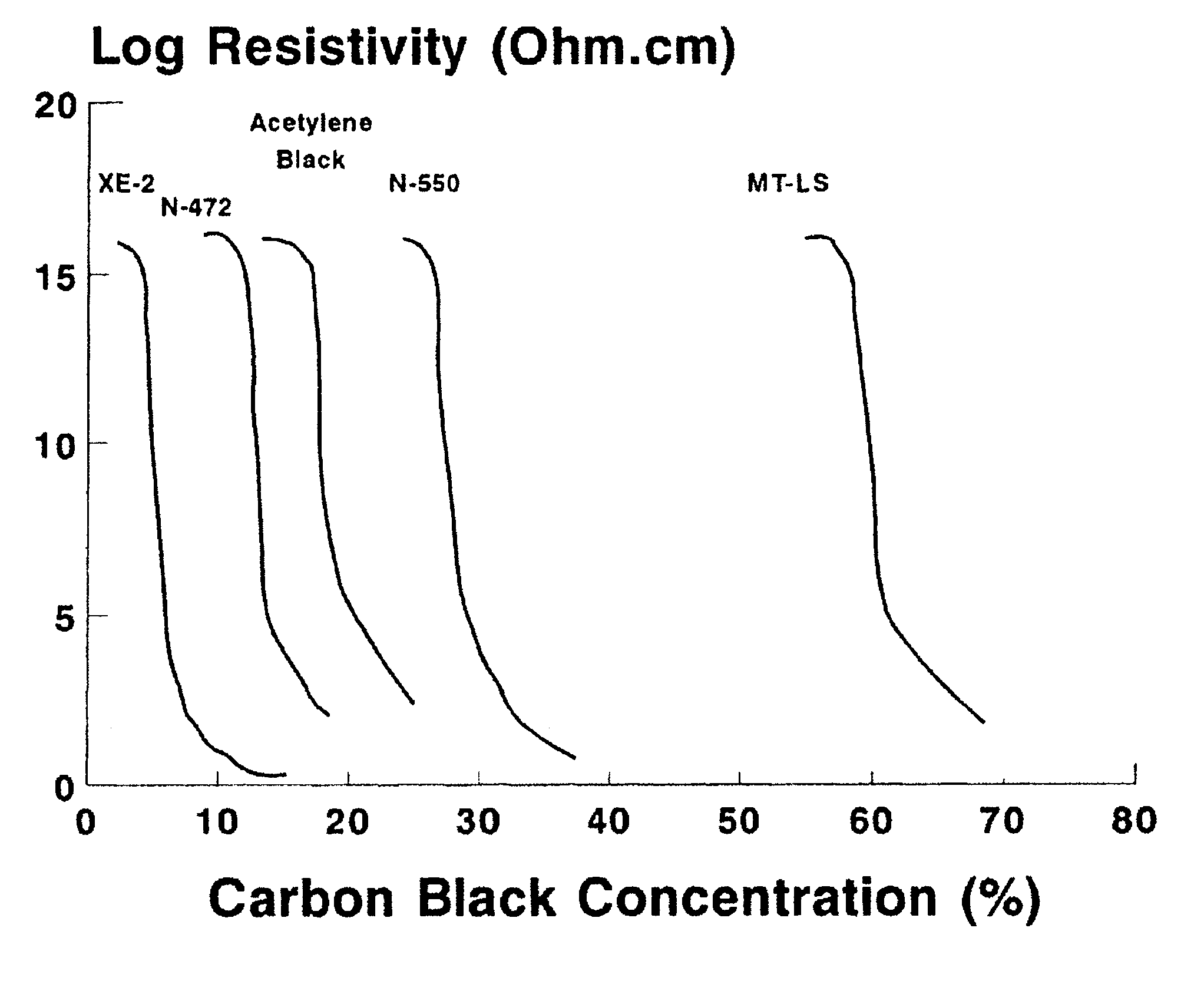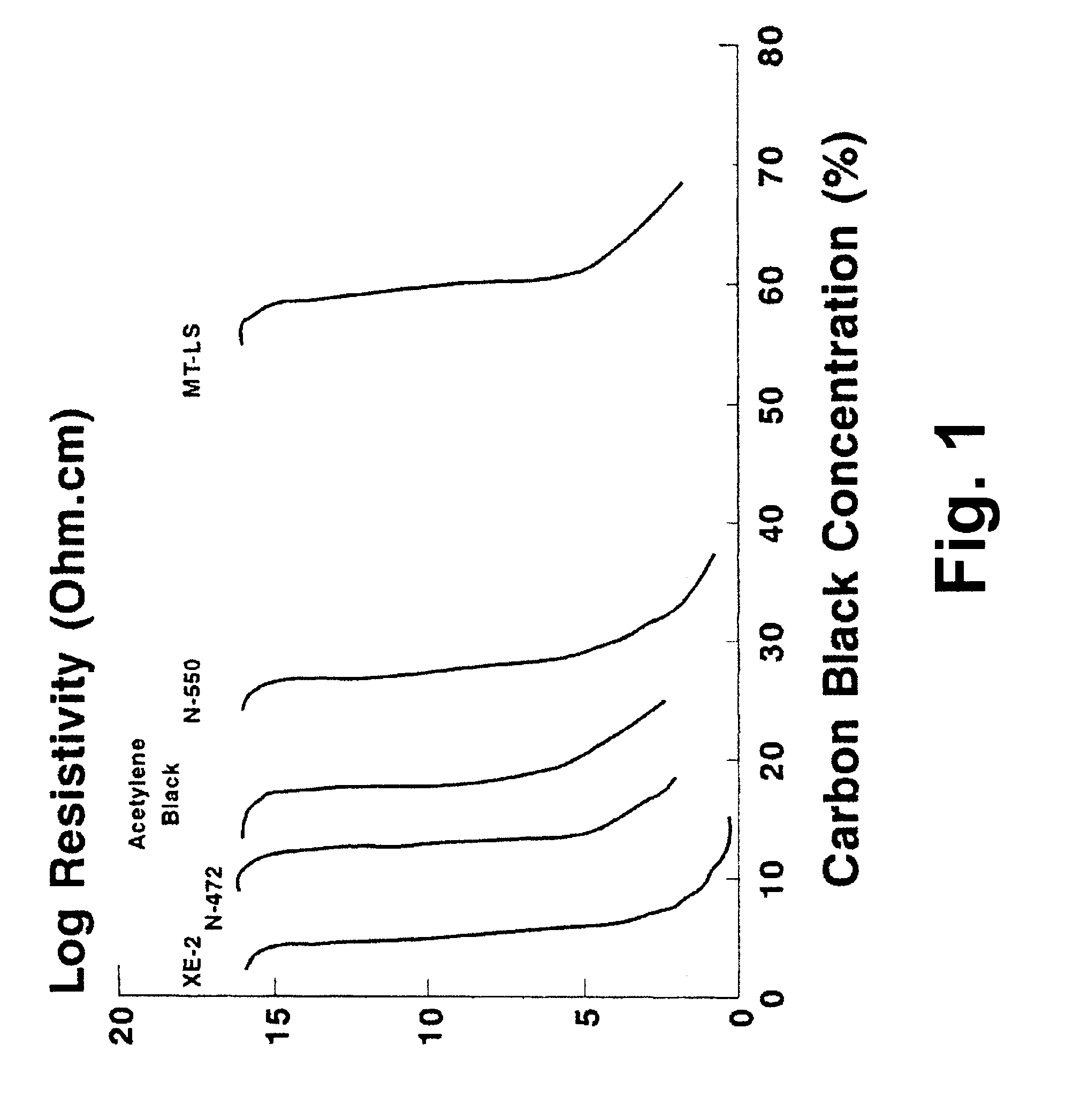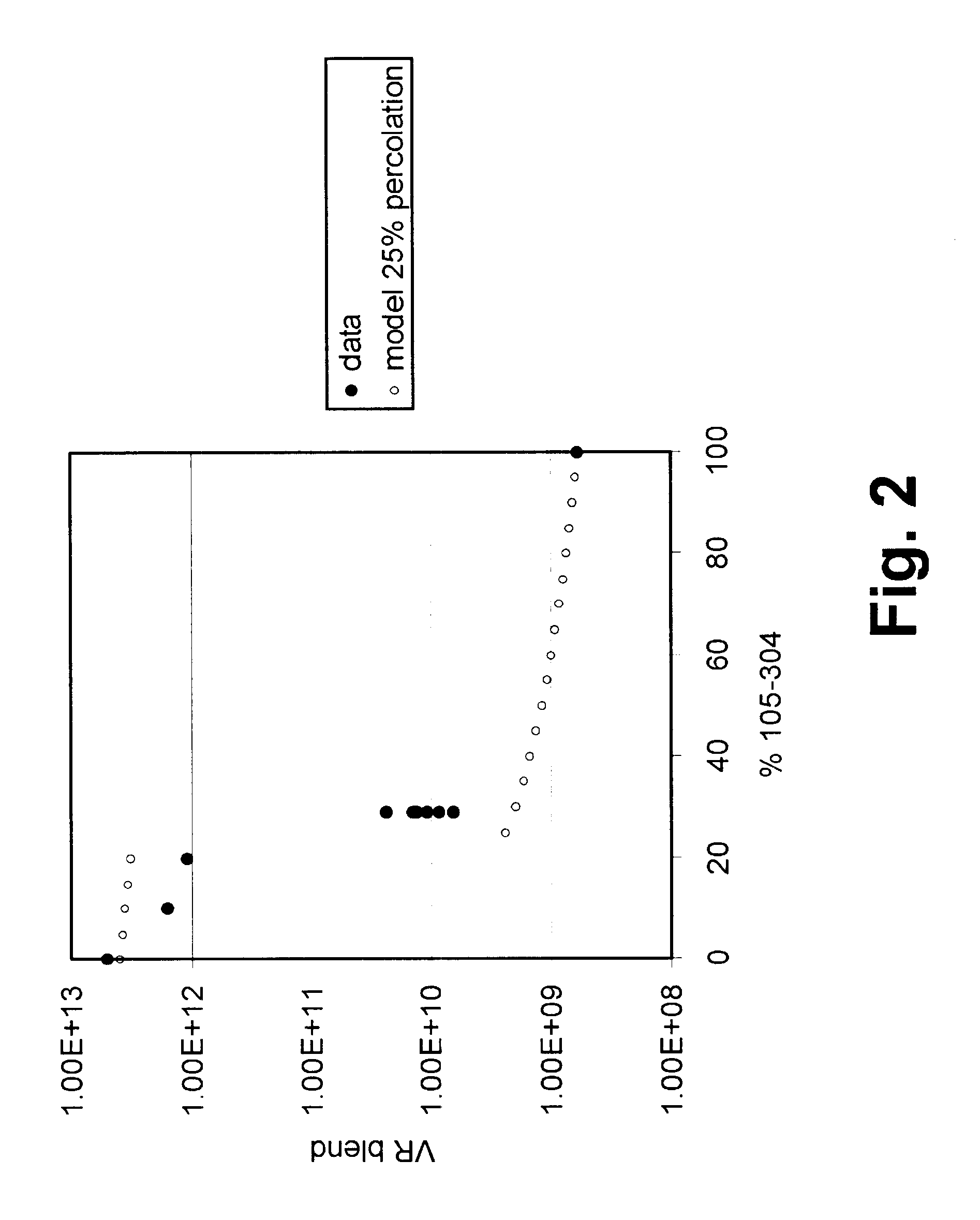Electro-optic display and adhesive composition for use therein
a technology of electro-optic displays and adhesive compositions, applied in the direction of identification means, instruments, static indicating devices, etc., can solve the problems of unsatisfactory commercial pressure sensitive adhesives, inadequate service life of electro-optic displays, and preventing their widespread us
- Summary
- Abstract
- Description
- Claims
- Application Information
AI Technical Summary
Problems solved by technology
Method used
Image
Examples
example 2
This Example illustrates the variation in volume resistivity achieved by adding NeoRez R 9320 (a water-dispersible polyurethane available from NeoResins, 730 Main Street, Wilmington, Mass. 01887) to the aforementioned GME-2417.
Varying proportions of NeoRez R 9320 were blended with GME-2417 and the volume resistivities of the resultant blends were measured in the same way as in Example 1 above. The results are illustrated in FIG. 3 of the accompanying drawings, which also shows theoretical results calculated assuming a percolation threshold of 20 percent by volume. As in Example 1 above, the experimental results are a reasonably good fit to the model, displaying a sudden drop as the percolation threshold is passed and a slow decrease thereafter as the proportion of filler is increased. It will also be seen that at about 40 percent filler loading, the blend has a volume resistivity of about 3.times.10.sup.10 ohm cm, rendering it suitable for use in lamination of an electro-optic displ...
PUM
| Property | Measurement | Unit |
|---|---|---|
| volume resistivity | aaaaa | aaaaa |
| volume resistivity | aaaaa | aaaaa |
| volume resistivity | aaaaa | aaaaa |
Abstract
Description
Claims
Application Information
 Login to View More
Login to View More - R&D
- Intellectual Property
- Life Sciences
- Materials
- Tech Scout
- Unparalleled Data Quality
- Higher Quality Content
- 60% Fewer Hallucinations
Browse by: Latest US Patents, China's latest patents, Technical Efficacy Thesaurus, Application Domain, Technology Topic, Popular Technical Reports.
© 2025 PatSnap. All rights reserved.Legal|Privacy policy|Modern Slavery Act Transparency Statement|Sitemap|About US| Contact US: help@patsnap.com



